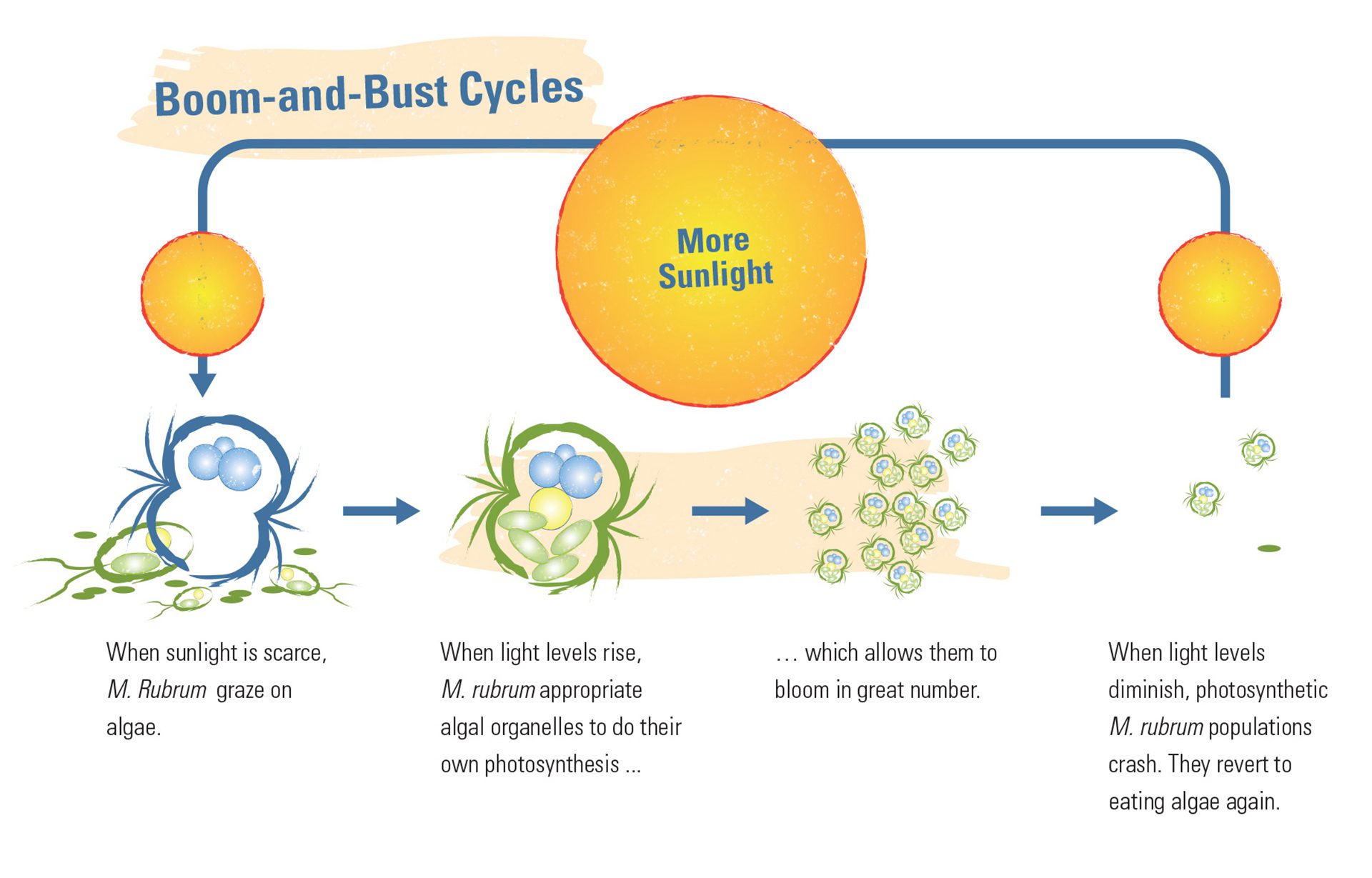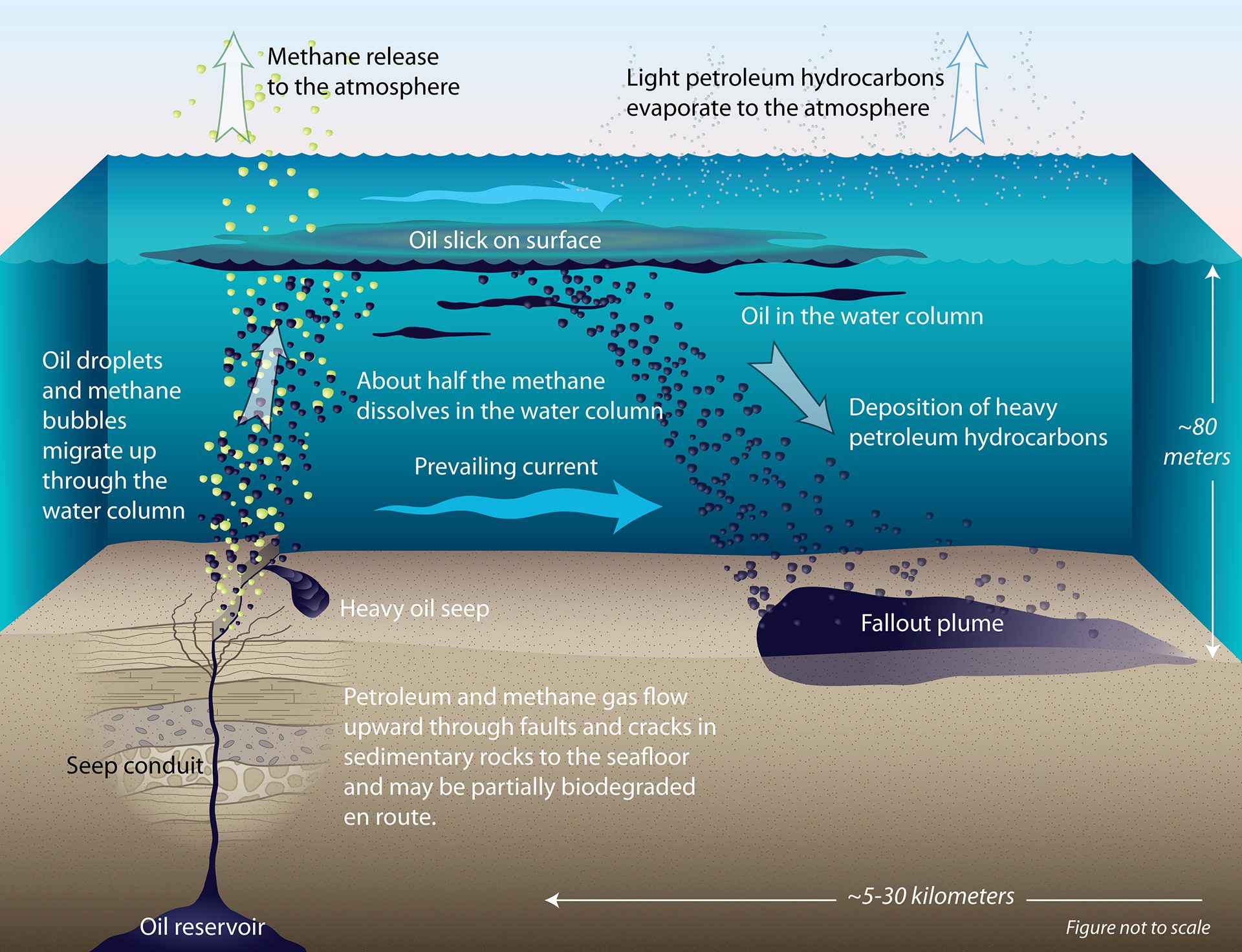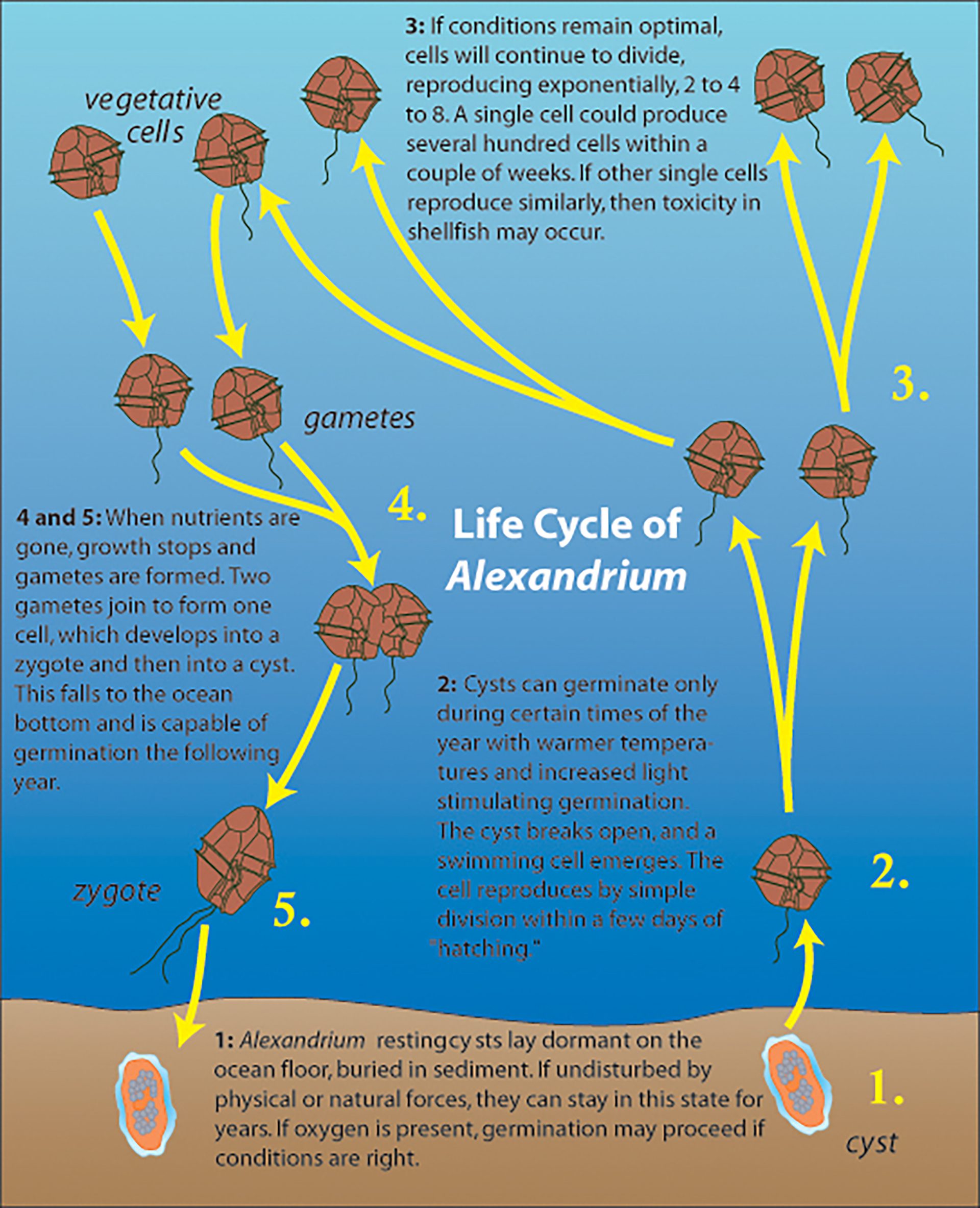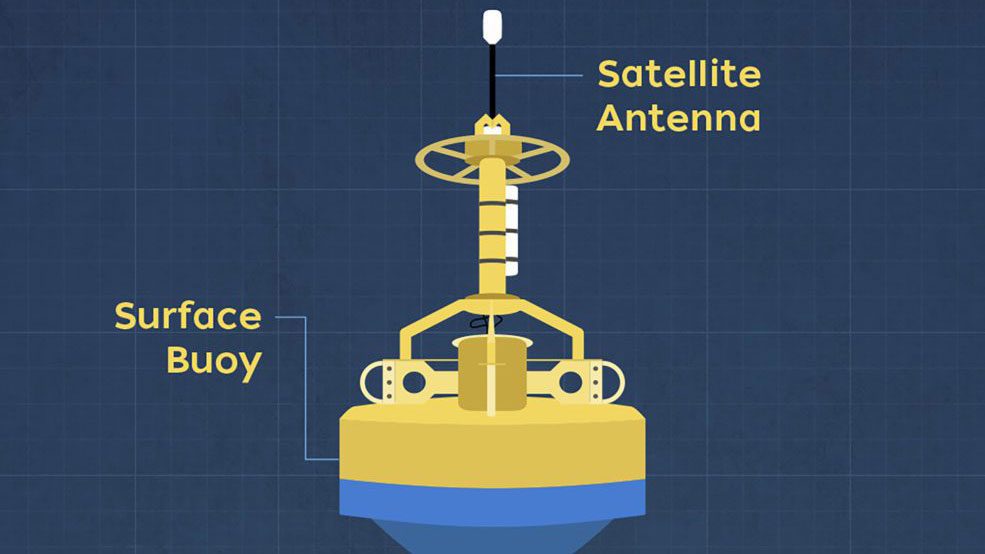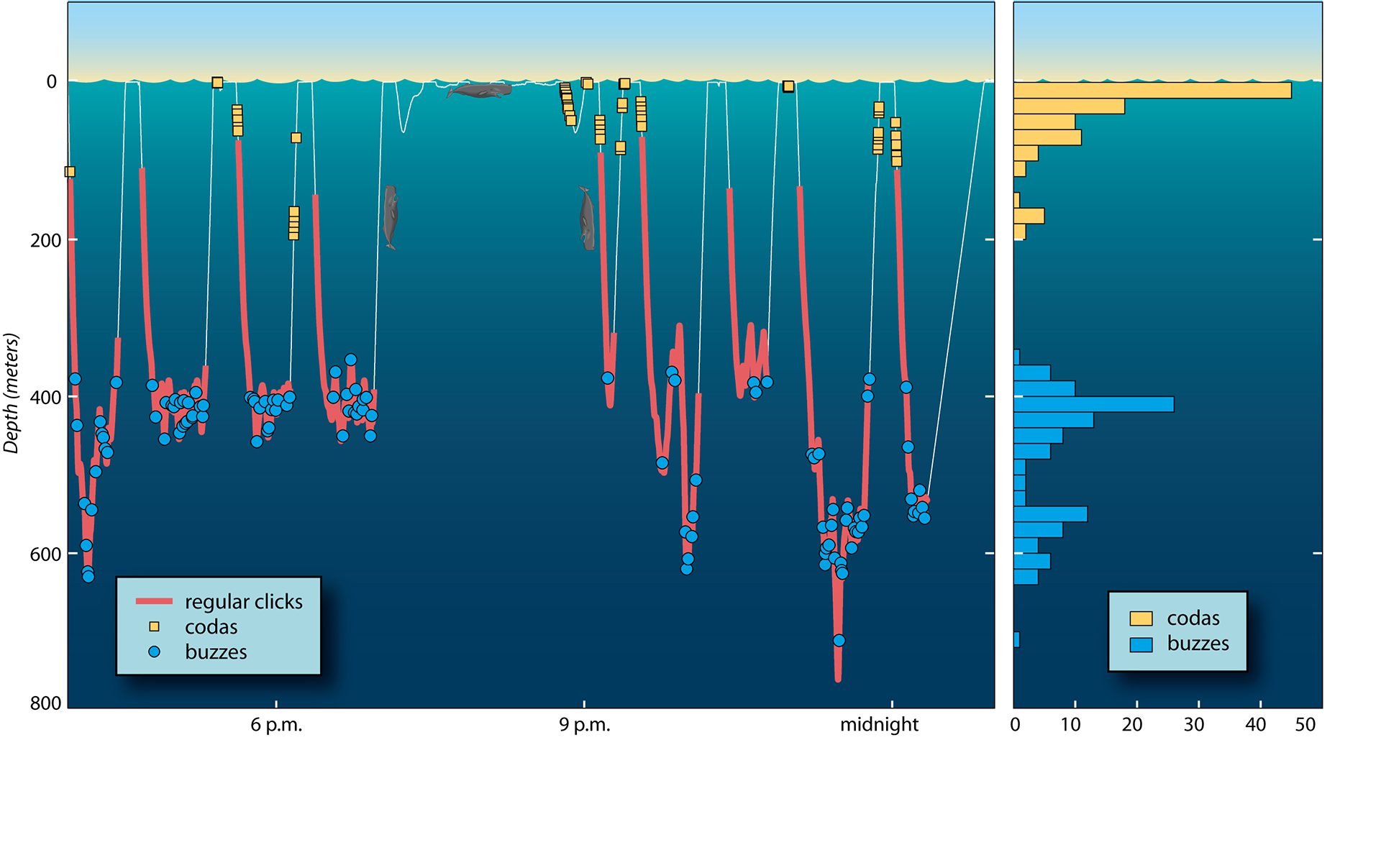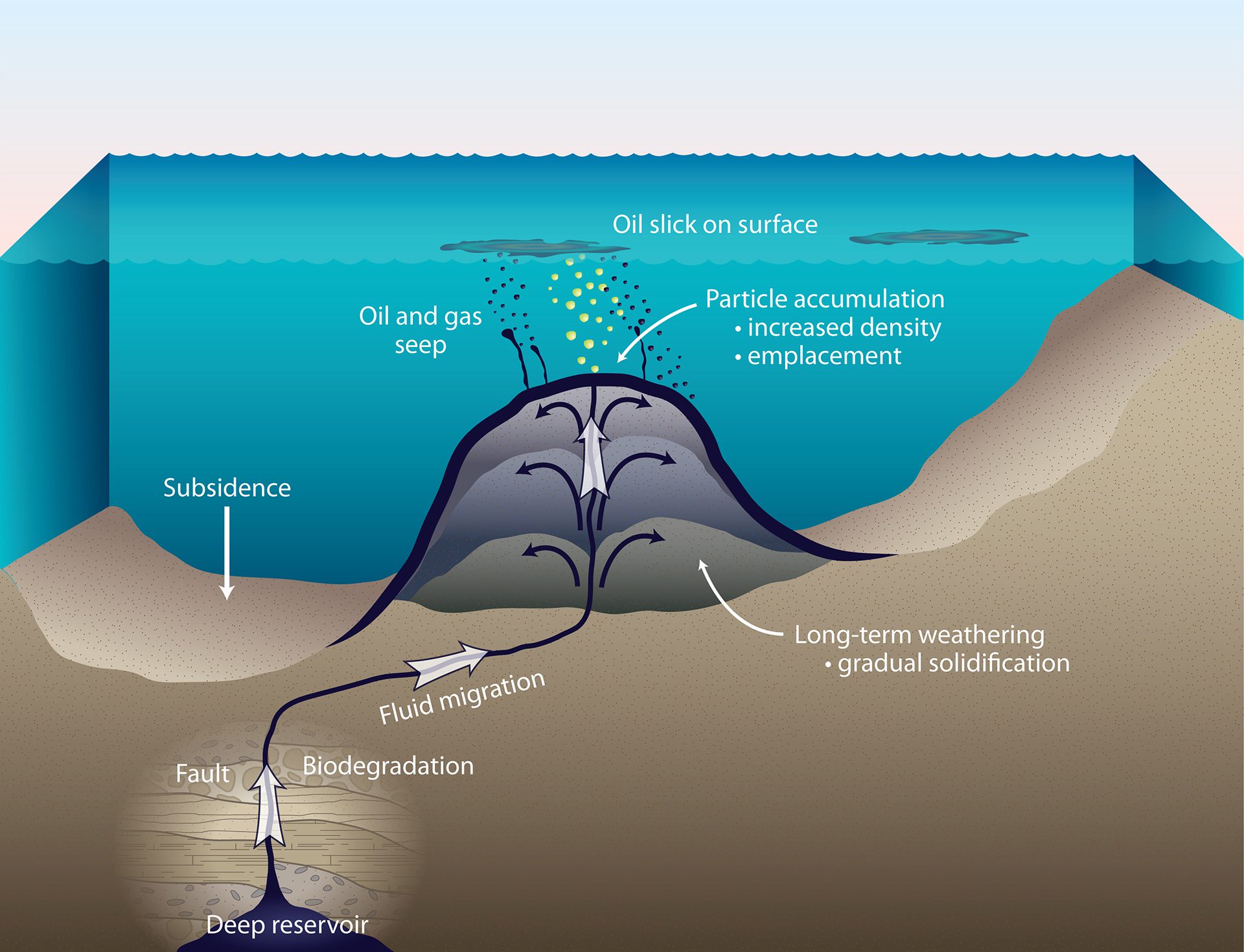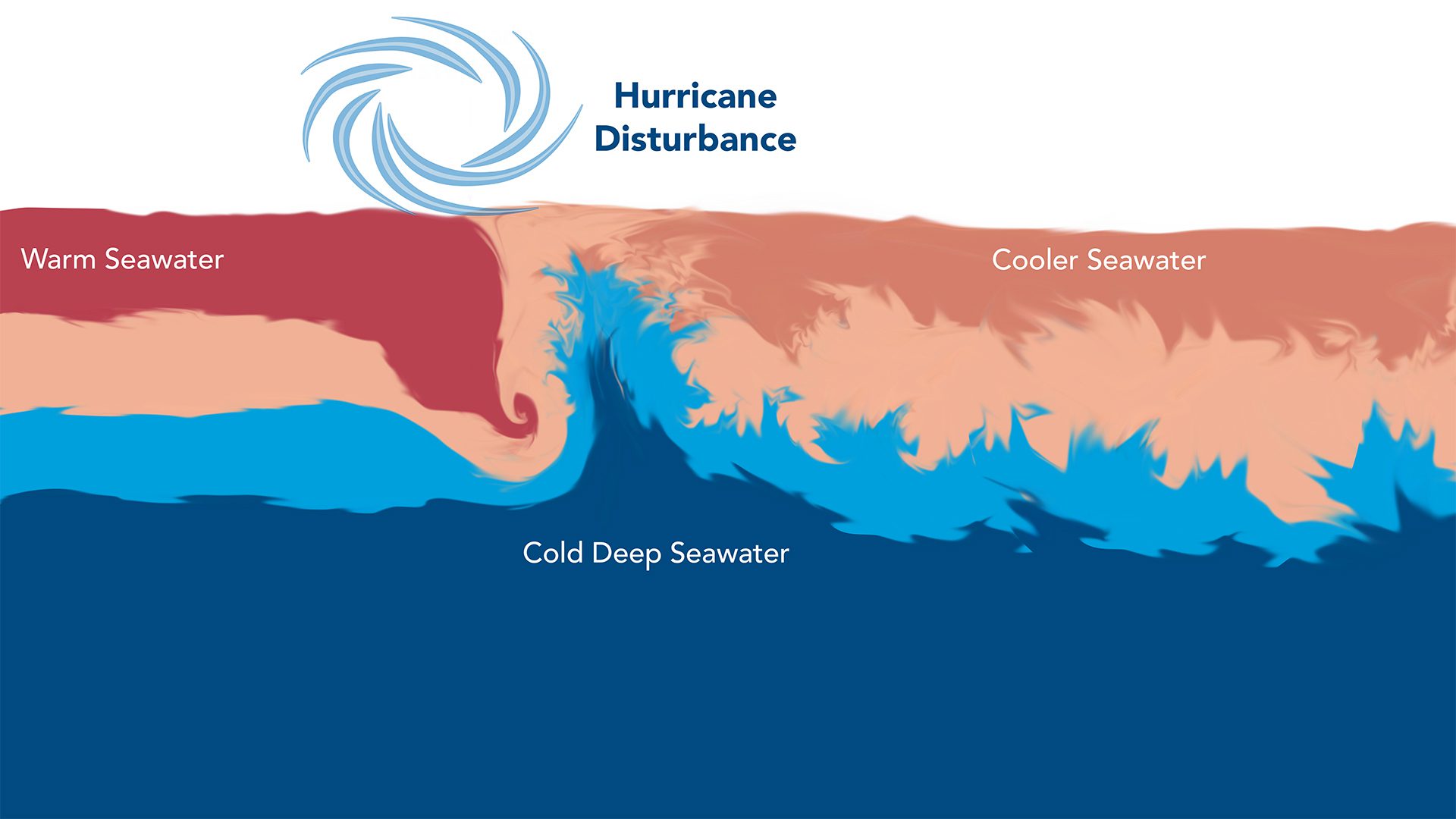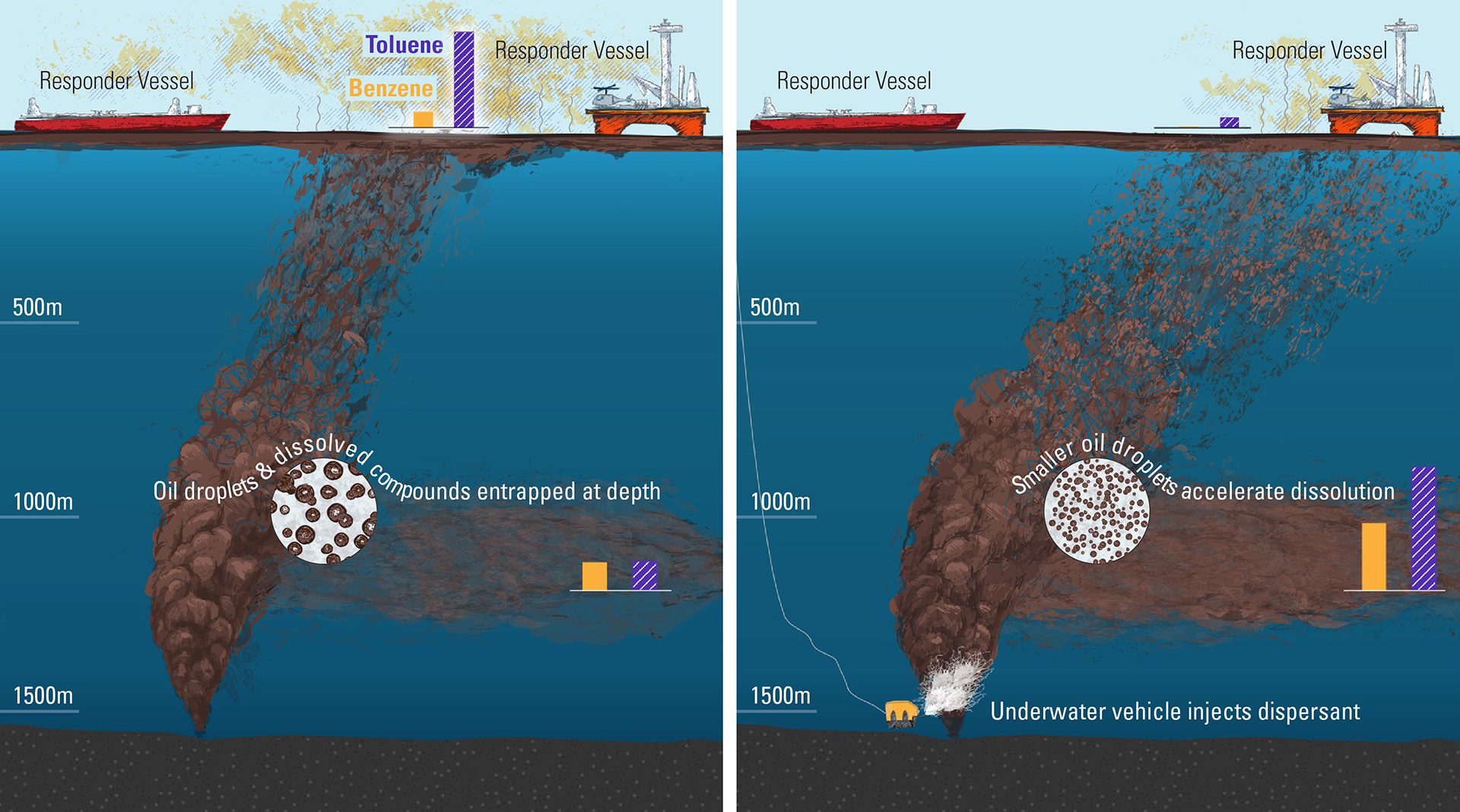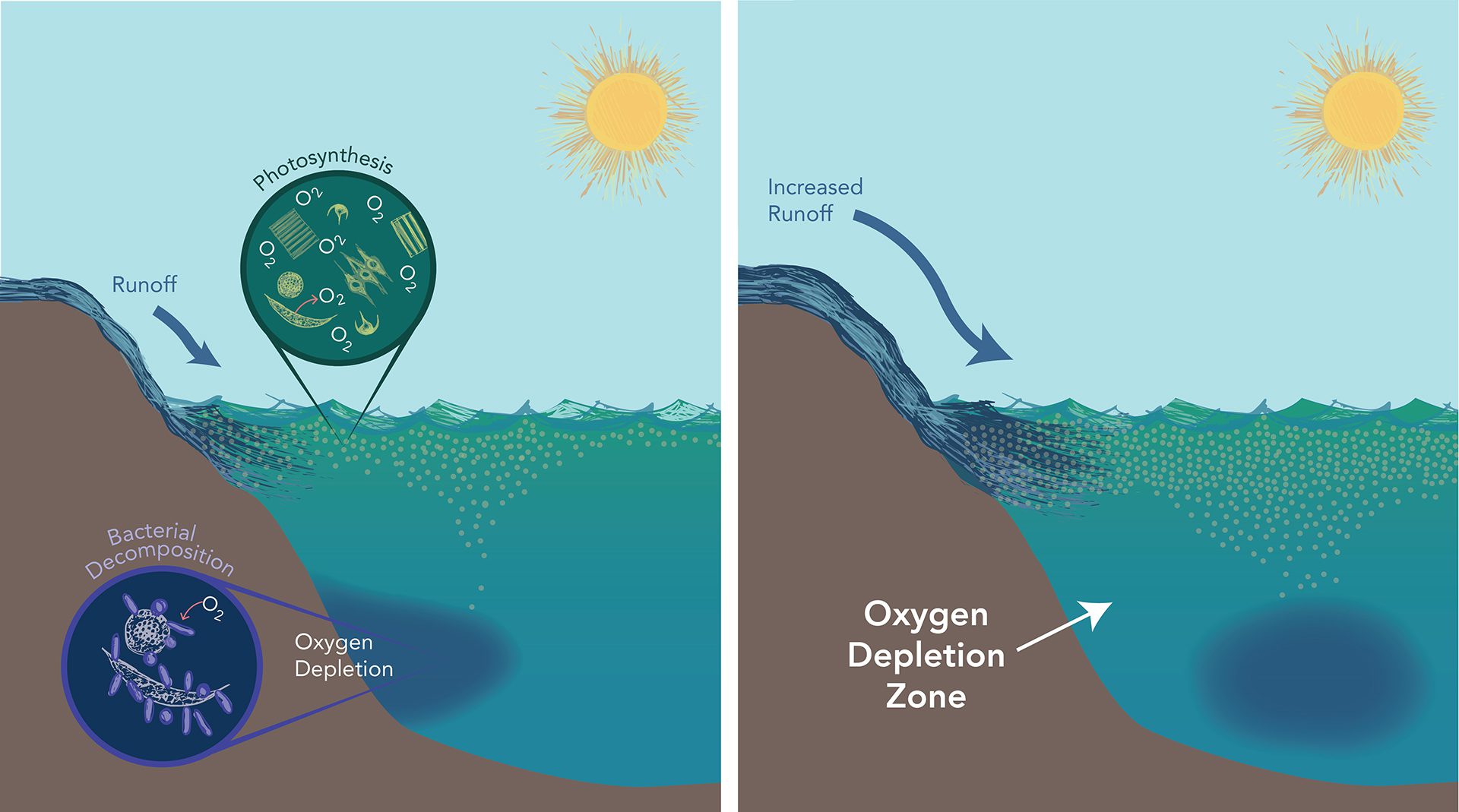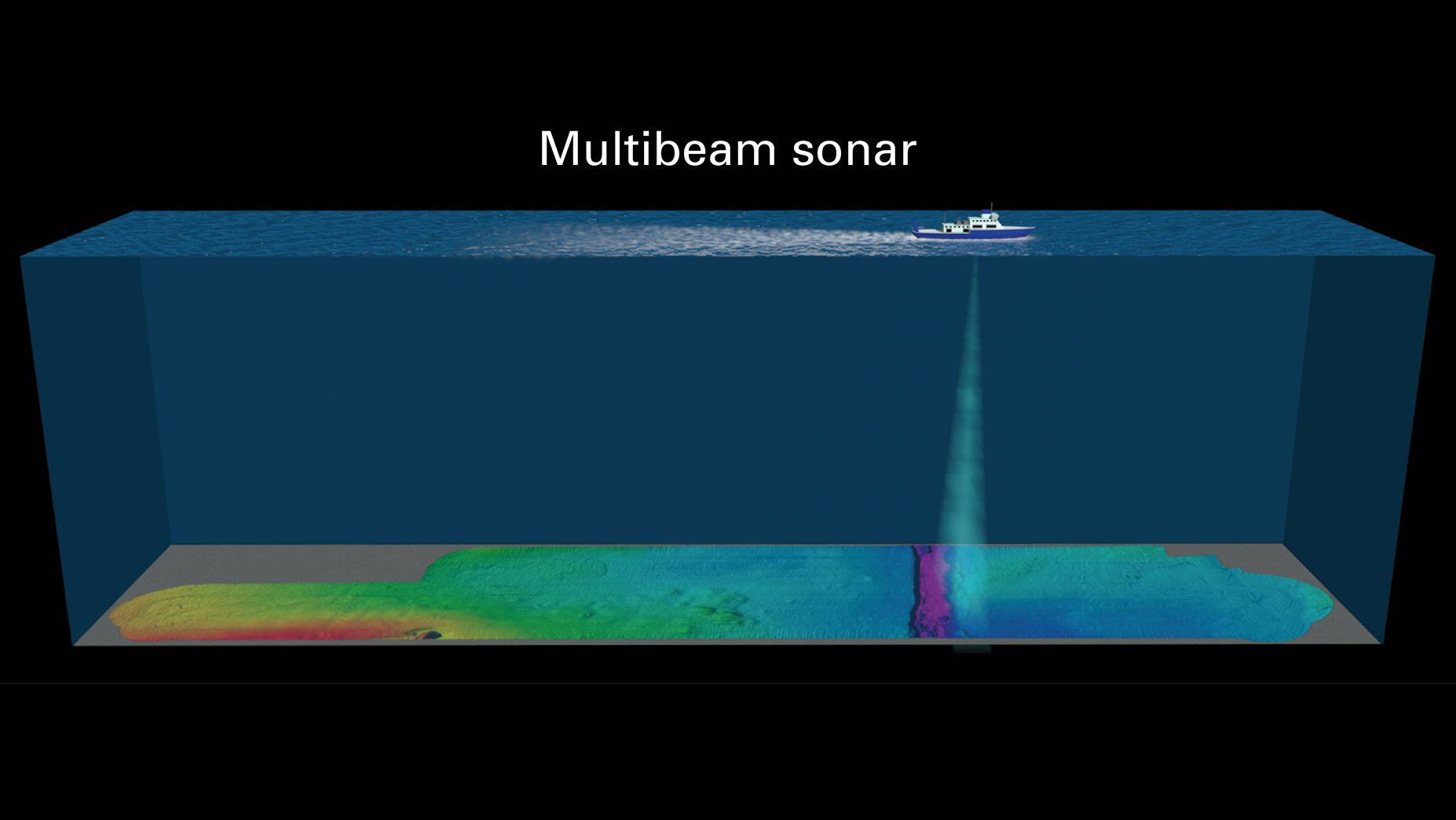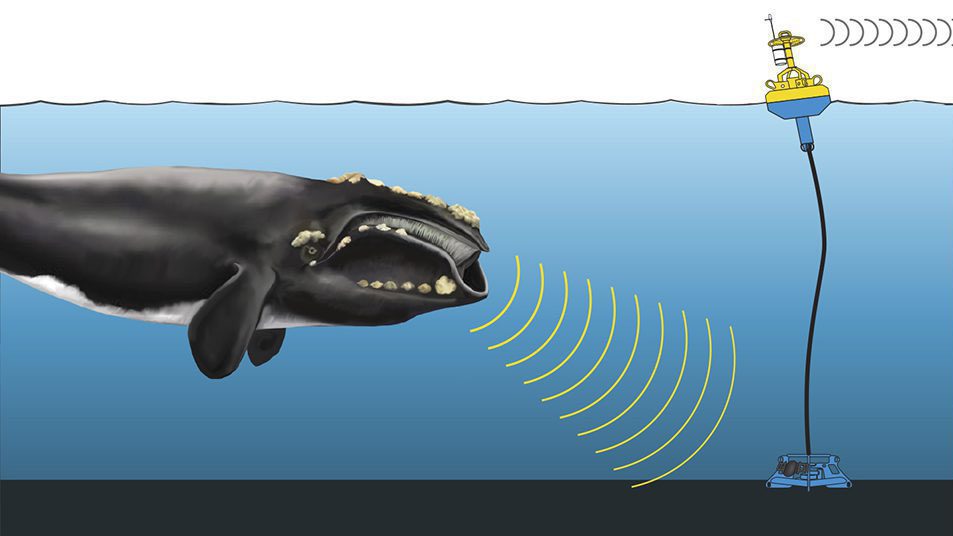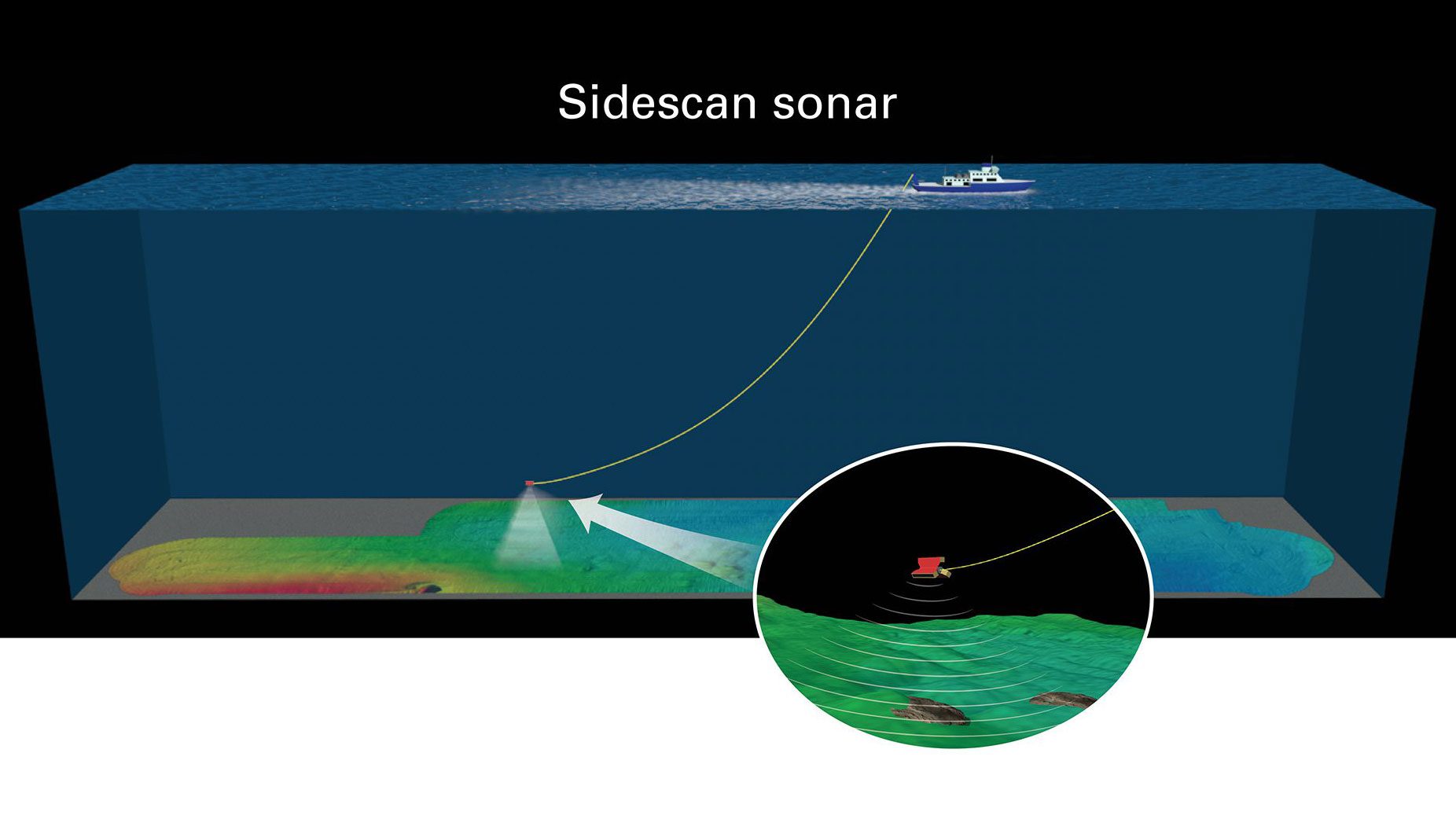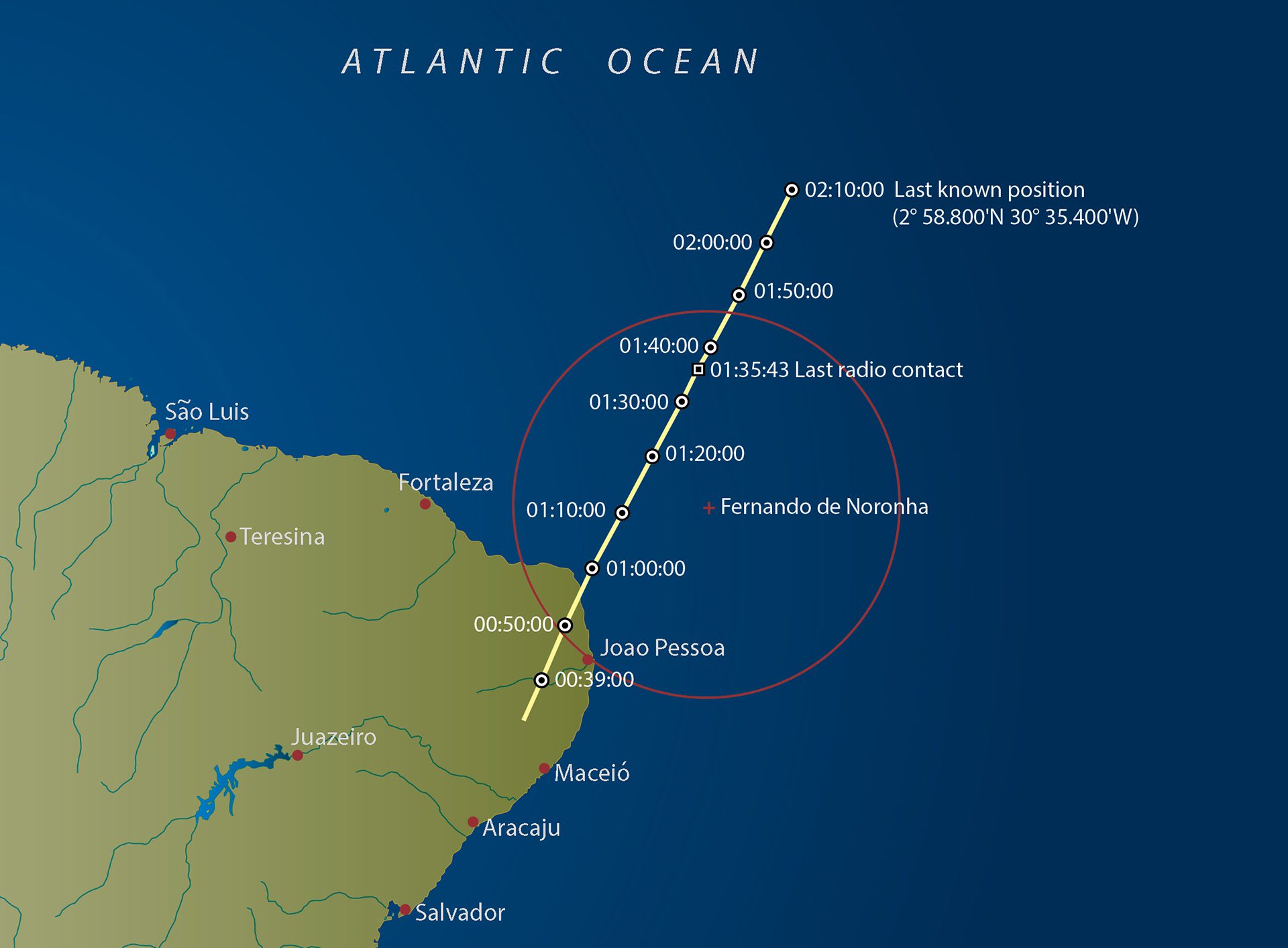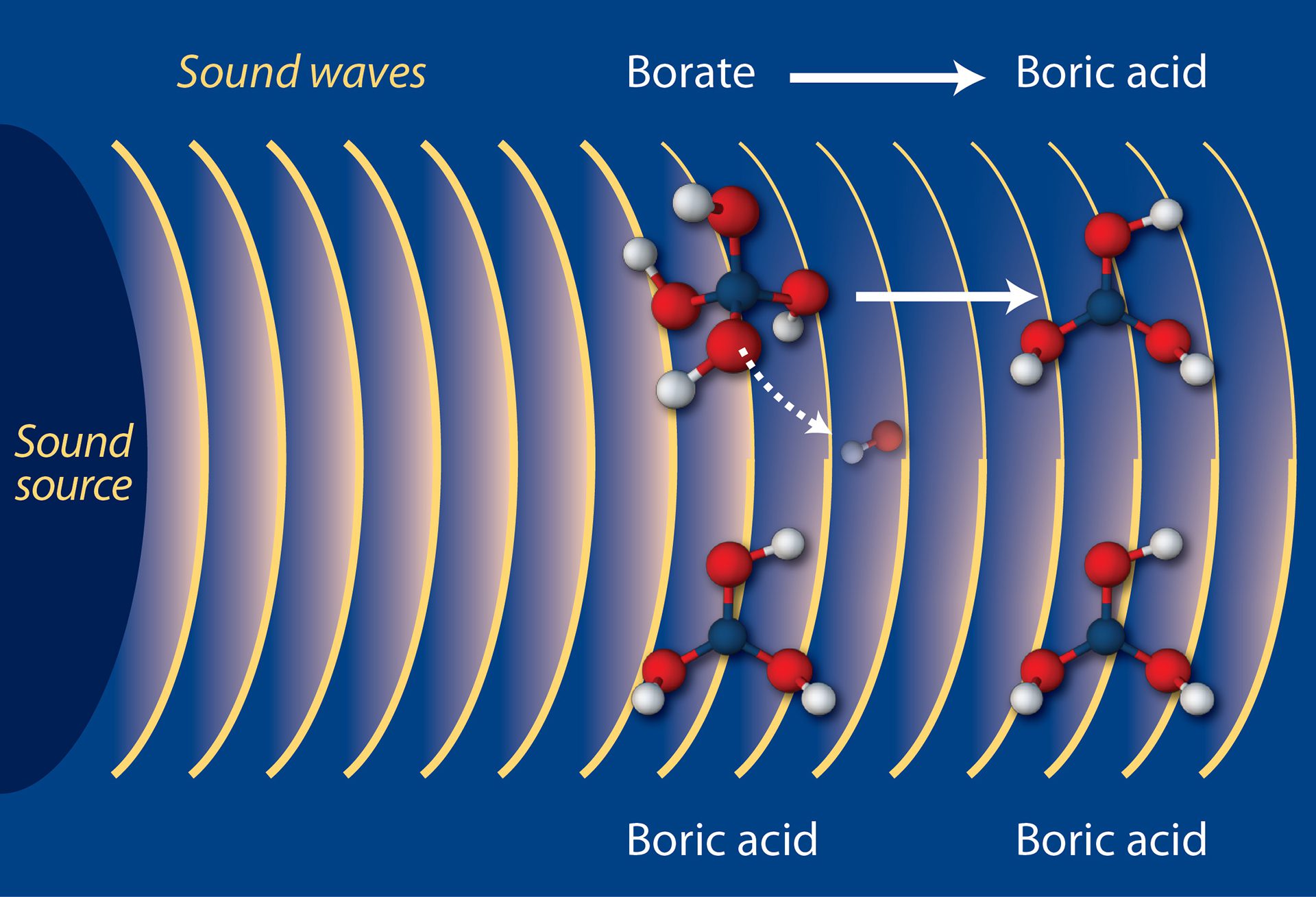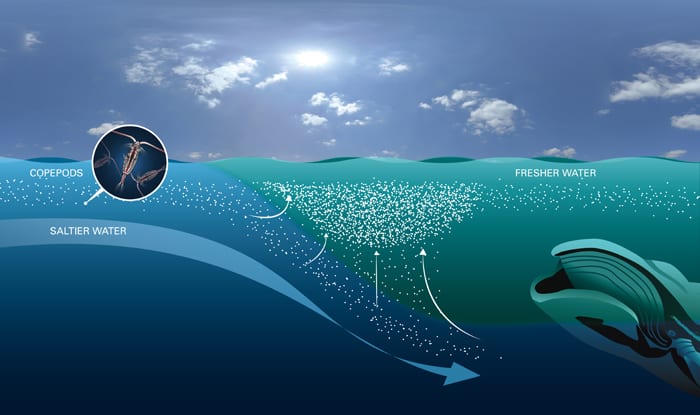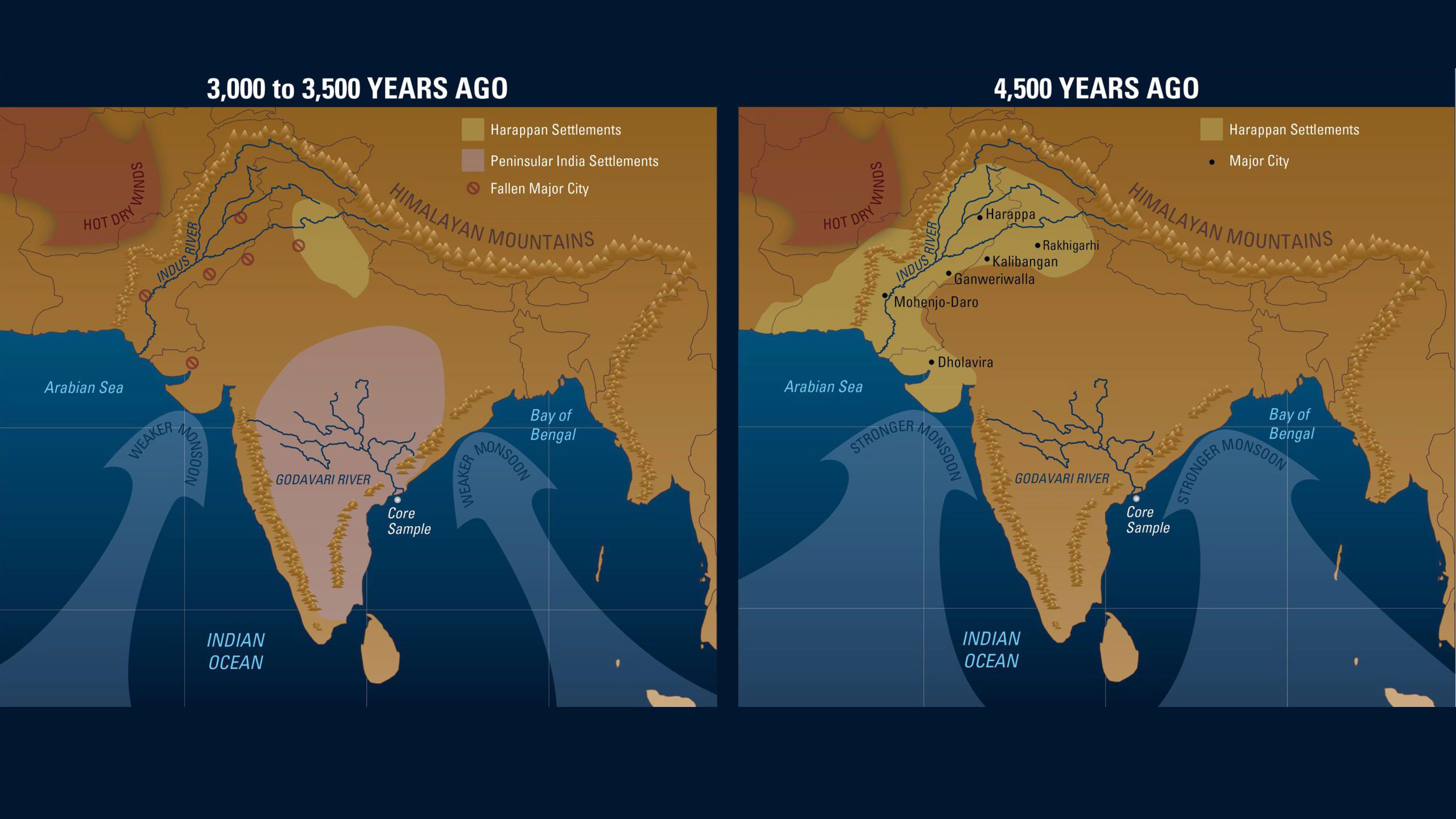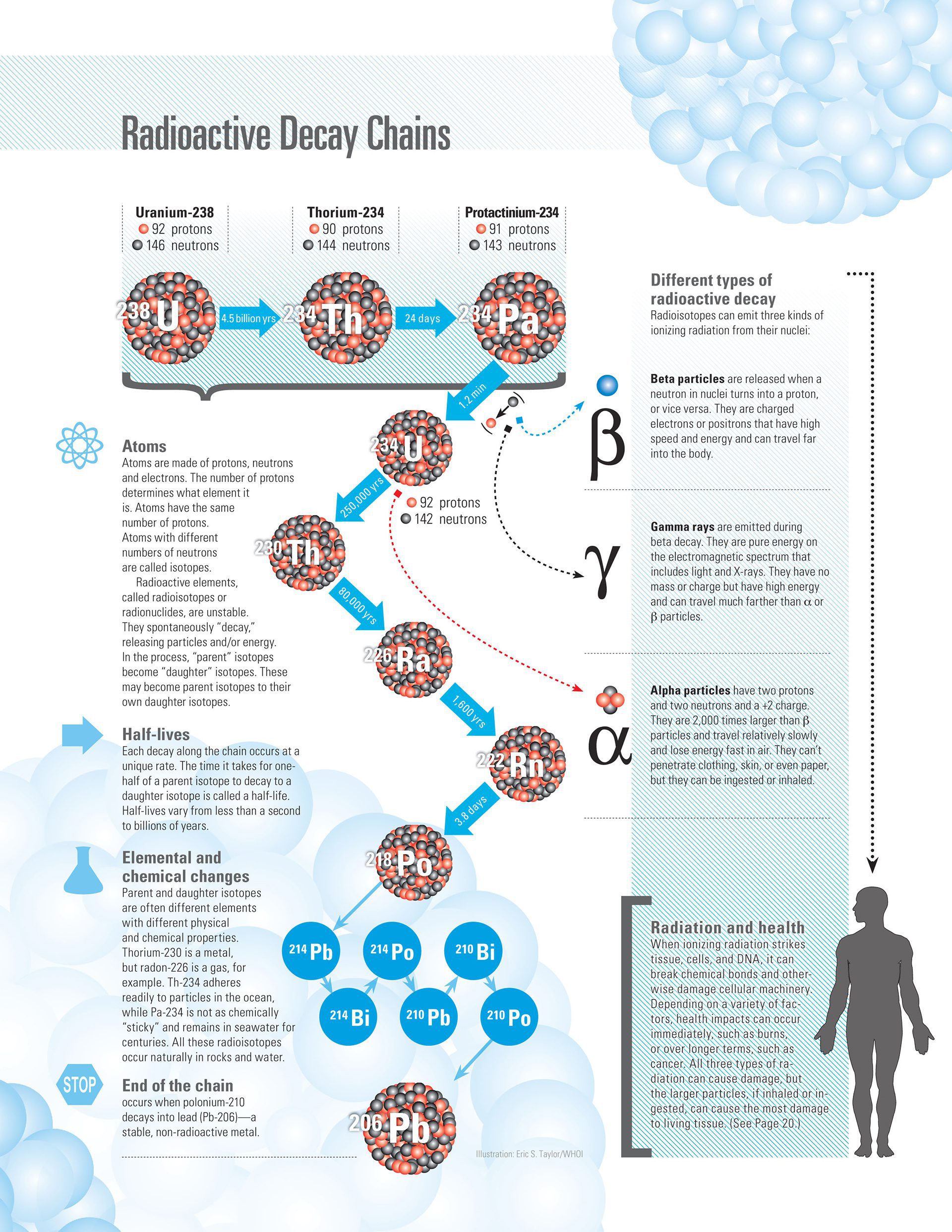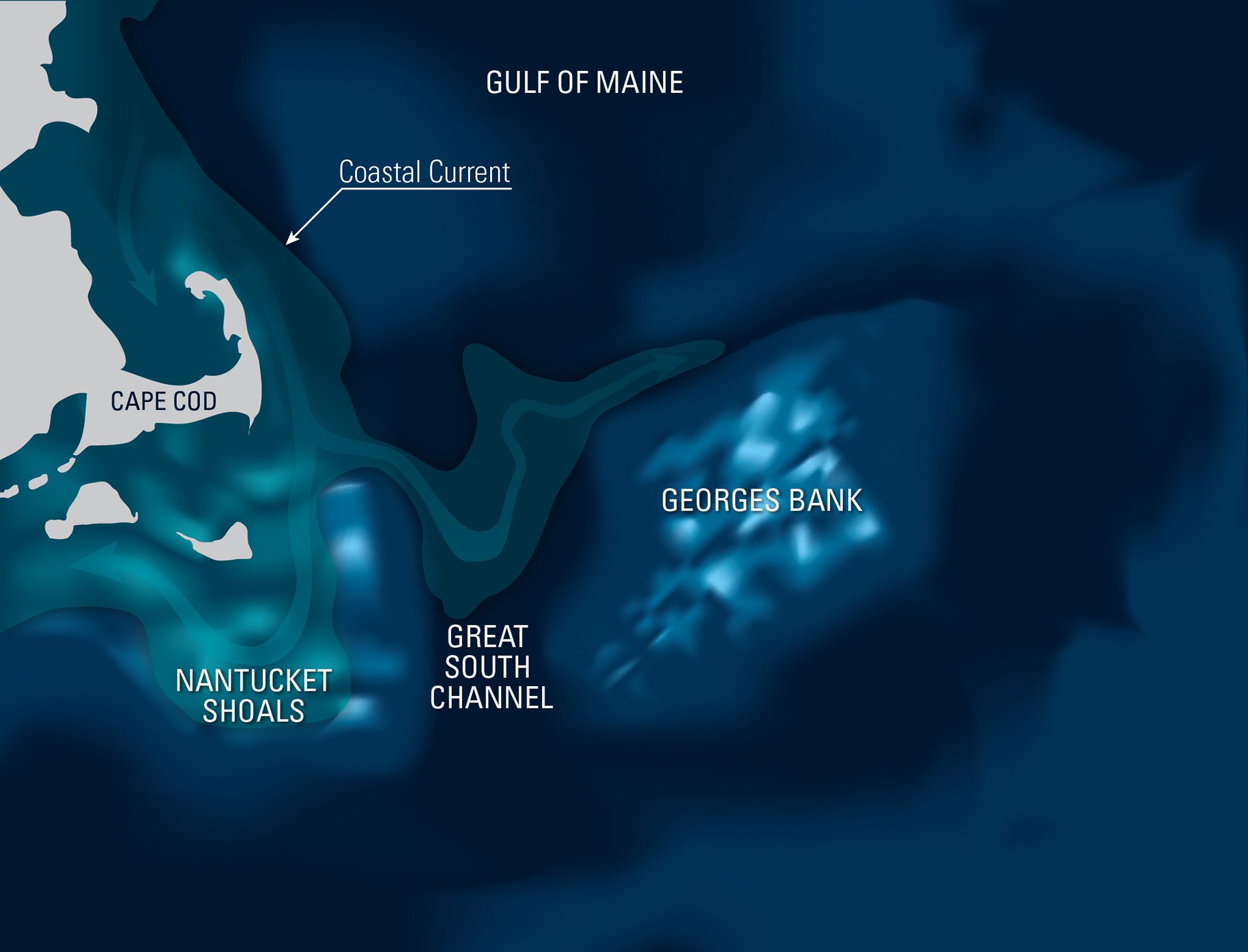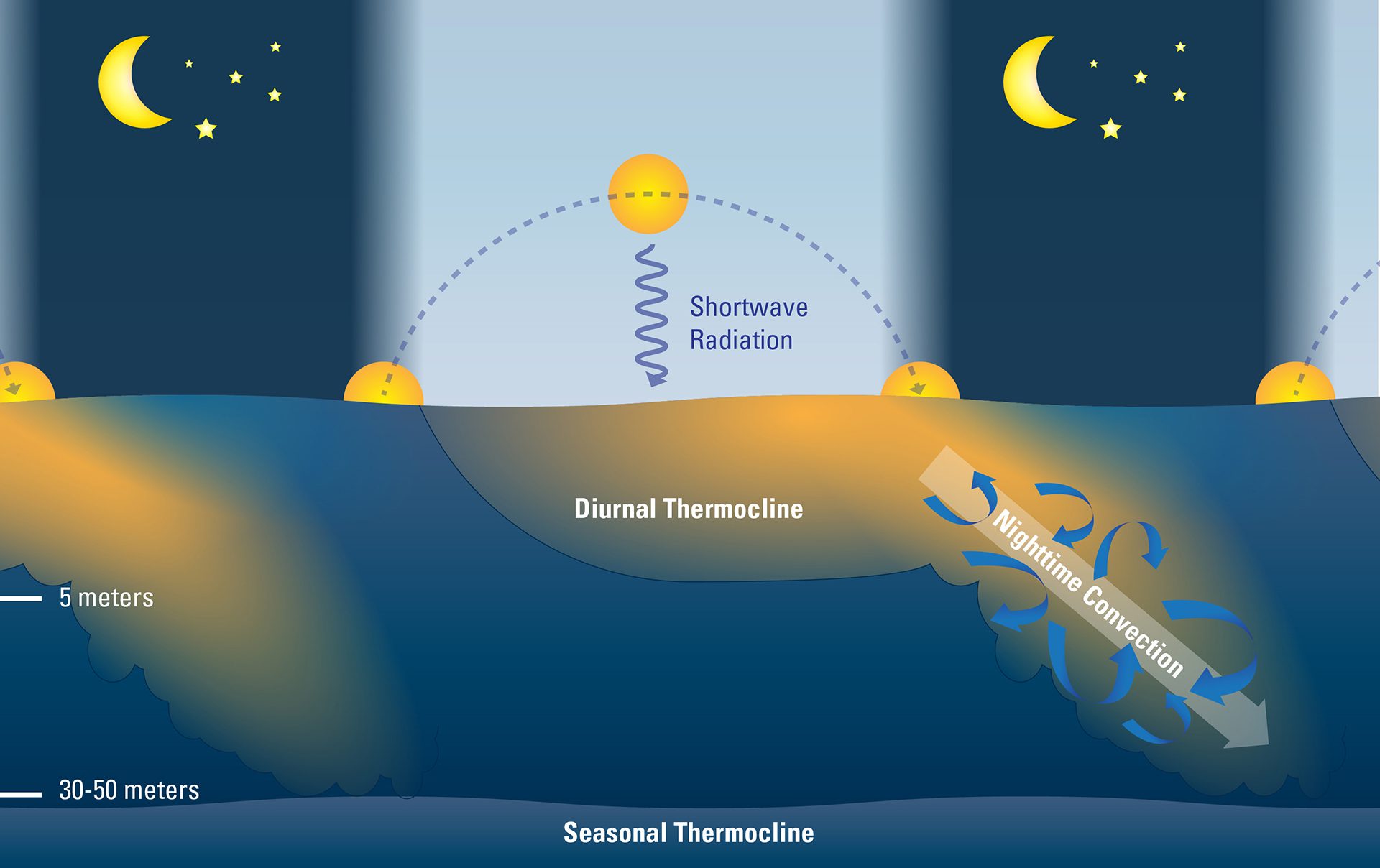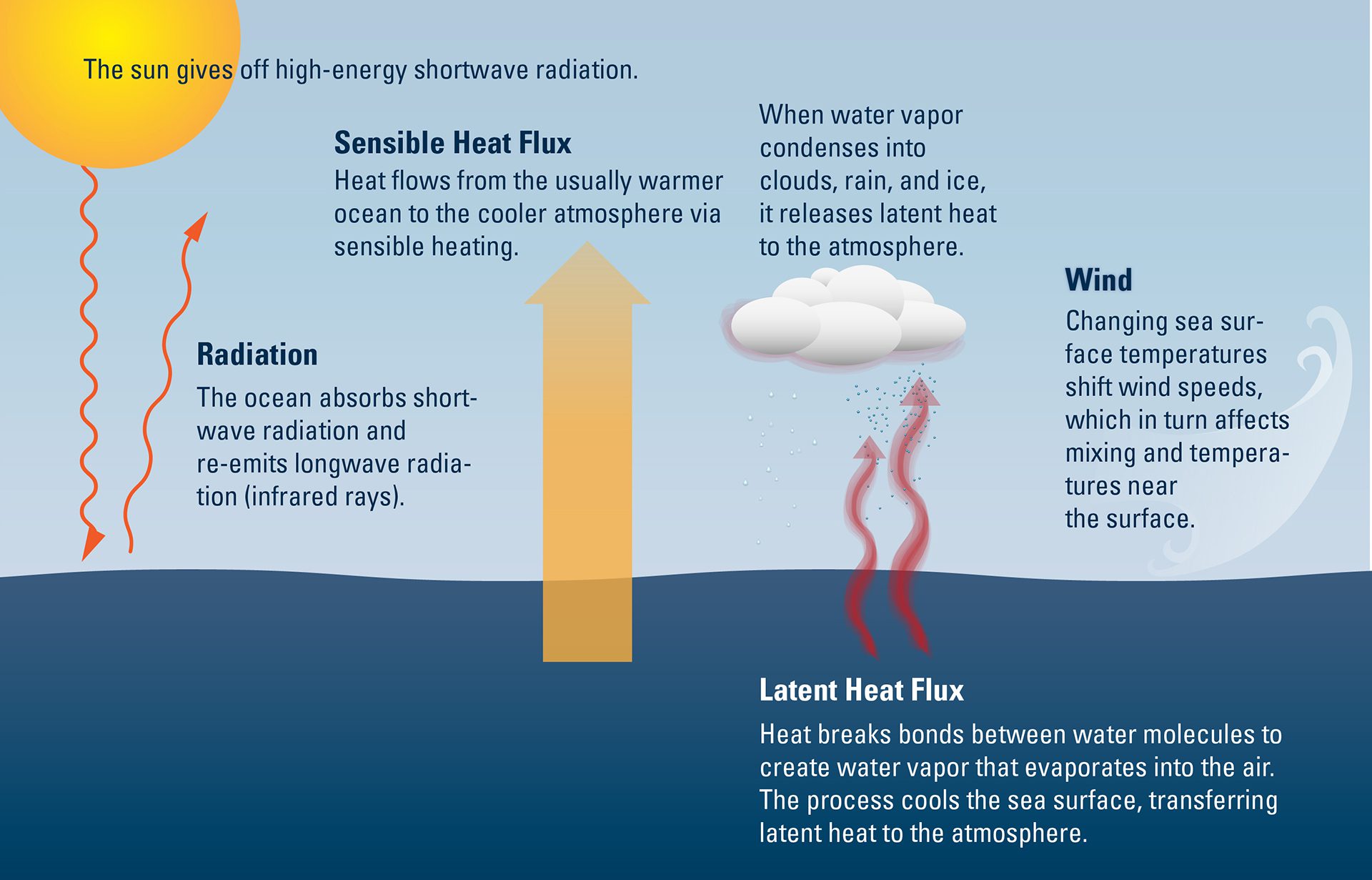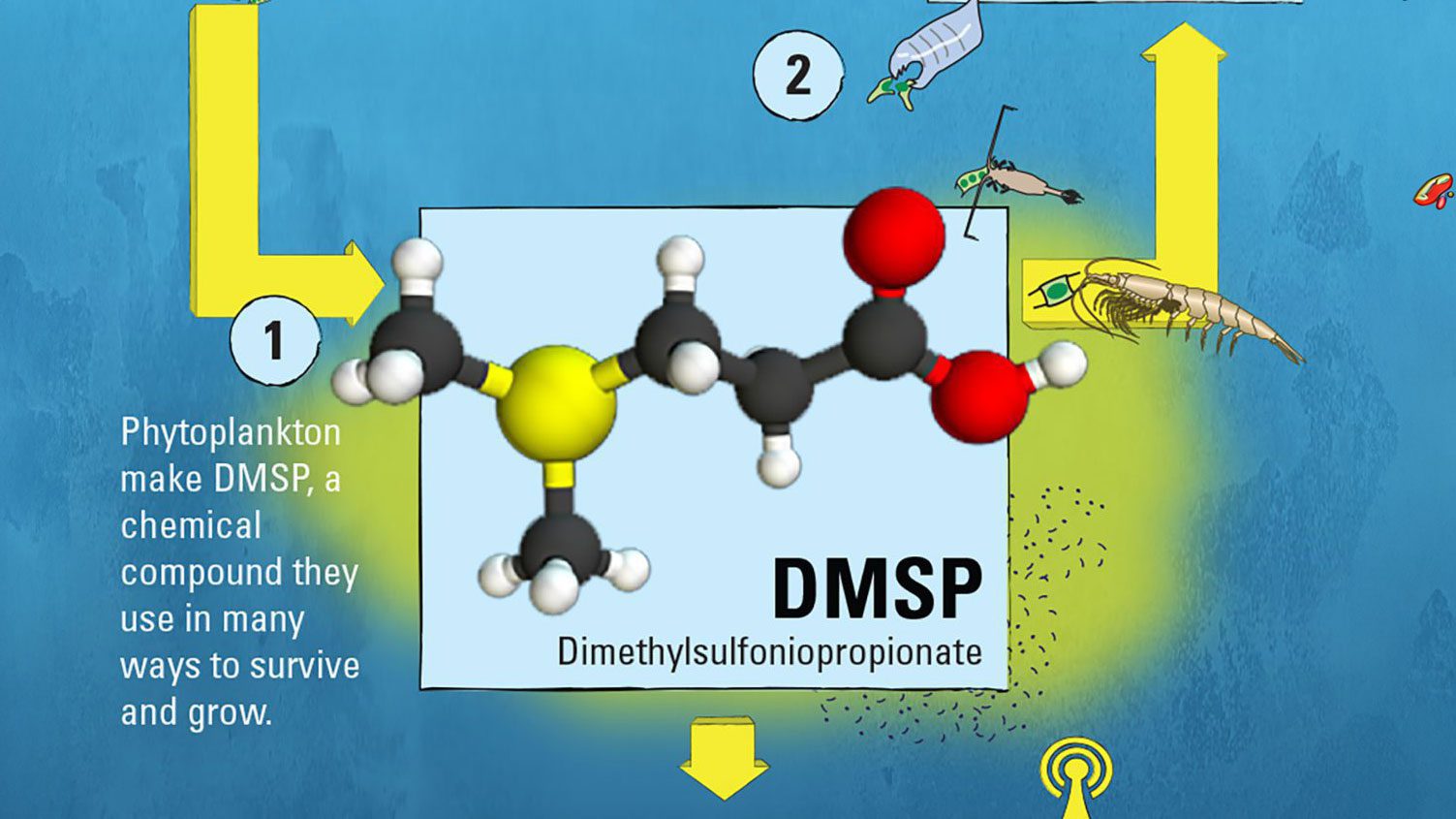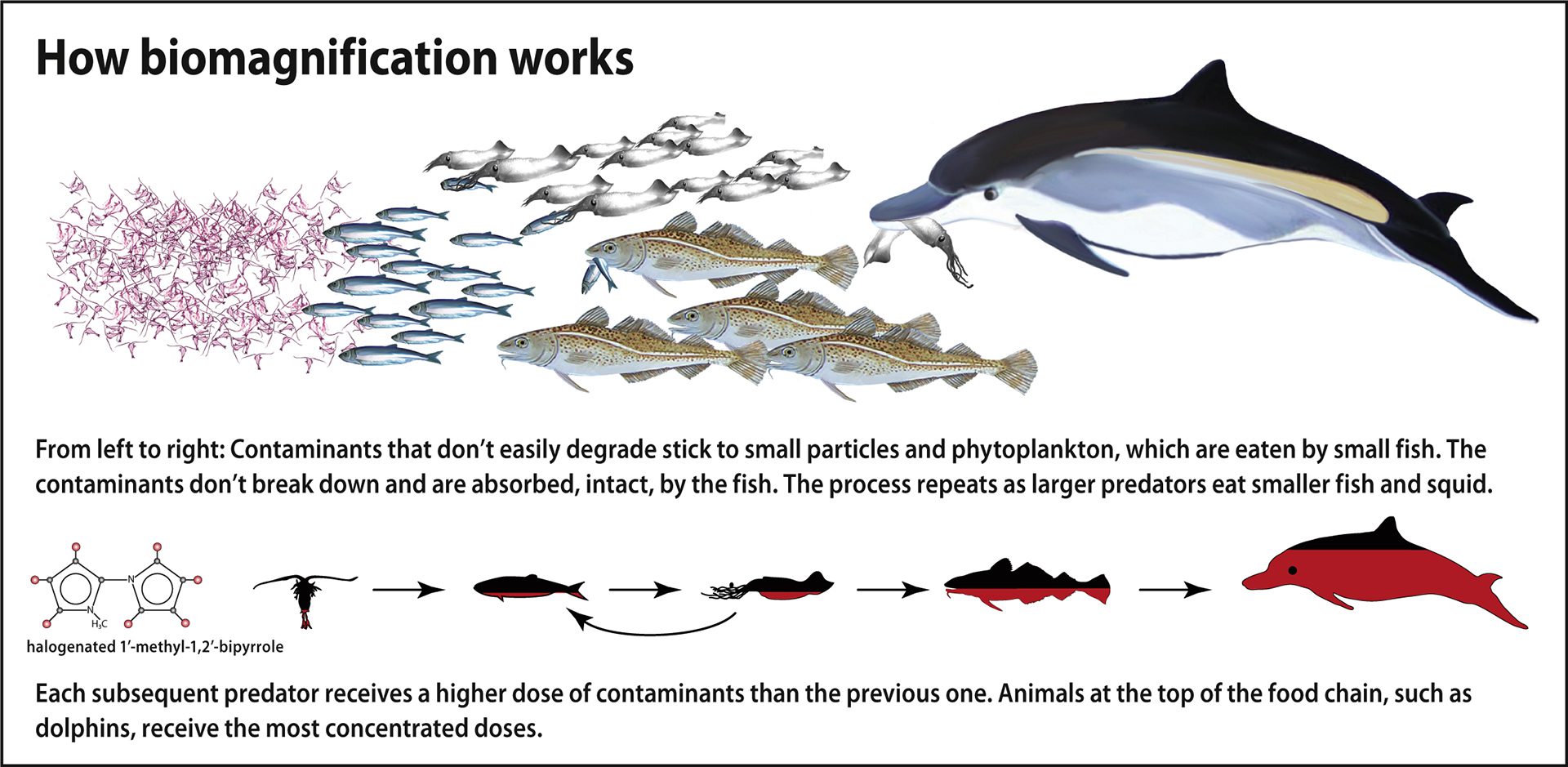Multimedia
Mesodinium rubrum Boom-and-bust Cycles
Mesodinium rubrum usually grow by eating algae, but it can also steal cellular machinery from algae and use it to make its own food via photosynthesis.
Read MoreSubsea oil seep
About half of ocean oil comes from natural seeps. Studying their path helps scientists better understand how oil moves and settles after spills.
Read MoreIllustration of Alexandrium life cycle Red tide research
Dinoflagellates such as Alexandrium, which can cause harmful algal blooms, have effective strategies for survival and dispersal.
Read MoreIllustration of a whale-detection DMON buoy system
This whale detection system transmits information about whale sounds to shore in near real time.
Read MoreMass spectrometry process
Proteomics helps scientists see how ocean organisms respond to change by analyzing the proteins they produce—not just what they can do, but what they are doing.
Read MoreSperm whale path
D-tag data show sperm whales use rhythmic “codas” to communicate and rapid “buzzes” to pinpoint prey, revealing how they navigate and hunt in the deep.
Read MoreSubsea asphalt volcano
Faulting or rupturing in the Earth around allows oil and gas from subterranean reservoirs to seep up to the seafloor, while some oil solidifies to create asphalt volcanoes.
Read MoreHow a hurricane forms
At the equator, trade winds create a surface current east to west, while the Equatorial Undercurrent brings cooler, nutrient-rich water, promoting marine life.
Read MoreHow dispersants were used during the Gulf oil spill
A study modeled the impact of dispersants during Deepwater Horizon, showing they reduced oil droplets, limiting toxic gas levels and health risks.
Read MoreHow fast deoxygenation can happen
Phytoplankton use nutrients and sunlight to produce oxygen. Past nutrient spikes caused oxygen-depleted zones, echoing today’s ocean symptoms.
Read MoreHow multibeam sonar works
Multibeam sonar maps the seafloor by sending sound waves from ships or vehicles and measuring echoes to reveal depth, shape, and surface features.
Read MoreHow Right whale buoy detection system works
The DMON buoy detects whale calls, sends data via satellite to scientists in near-real time, helping identify species and reduce ship-whale collisions.
Read MoreHow sidescan sonar works
Sidescan sonar towed 500m above the seafloor maps surface textures. Soft mud appears dark; hard features like crusts or shells show up as bright images.
Read MoreAir France Flight 447 travel path
Map showing the approximate travel path of the ill-fated Air France Flight 447
Read MoreThe carbon exchange cycle
Carbon moves between air, land, and sea. In the ocean, CO? dissolves, is used by life, or stored in deep rocks—key to climate and life on Earth.
Read MoreThe effects of ocean acidification on sound waves
Low-frequency ocean sound causes borate to change to boric acid, absorbing energy. Ocean acidification may reduce this, but WHOI scientists found the effect on sound travel is minimal.
Read MoreTransport of copepods through the water column
The Great South Channel ocean front forms where fresh coastal water meets saltier water, causing copepods to gather in dense patches as they sink and swim back up the front.
Read MoreHow Monsoon Shifts Transformed Ancient South Asian Civilizations
Maps showing changing monsoons led to the fall of Indus Valley cities and spurred the rise of farming communities across the Indian peninsula 4,500 years ago.
Read MoreInfographic depicting radioactive decay chains
All radioisotopes lose energy by emitting ionizing particles such as neutrons, protons, electrons, or photons. Each change follows a unique timetable, or half-life.
Read MoreThe Great South Channel ocean front
Map showing an ocean front where cold, dense water from the Great South Channel meets fresher flows from the New England Coastal Current.
Read MoreAir-sea daily rhythm
Daily, sunlight warms ocean surface waters; at night, cooled, heavier water sinks and mixes down, renewing the surface for the next day’s heat exchange cycle.
Read MoreIllustration depicting Air-Sea exchanges
Scientists have assumed that under calm conditions, the ocean’s surface layer doesn’t mix with deeper waters. New observations suggest that this may not be true.
Read MoreHow the Dimethylsulfoniopropionate (DMSP) compound affects the environment
DMSP is synthesized by phytoplankton—the microscopic marine plants at the heart of the ocean food web—for a variety of beneficial uses.
Read MoreHow biomagnification works
Contaminants cling to tiny particles eaten by small fish, then concentrate up the food chain. Top predators like dolphins get the highest contaminant doses.
Read More
